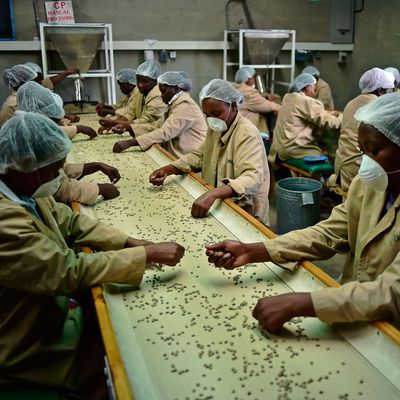
People who sell high-end coffee often promote their ties to the people who actually grow it. You’d be forgiven for thinking that it’s mostly a marketing ploy, but it turns out your obsession with $6 coffees sourced from South Sudan co-ops and small-lot Yirgacheffe farms really is helping the people who grow those coffees. According to a new report, the third-wave focus on premium coffee grown in African regions is reviving the continent’s once-vibrant industry.
Africa’s coffee exports have fallen 25 percent since the ’70s. That decade, Ethiopia, Uganda, Angola, and Ivory Coast were in the world’s top ten producers. (Currently, only Ethiopia and Uganda remain on that list.) But global exports are climbing — they’re up from about 95 million bags in 2003 to around 130 million today. In a Bloomberg interview today, Coffee Rwanda founder Karl Weyrauch, head of one of the U.S.’s major suppliers of African coffee, says Ethiopian beans got trendy a while back (thanks largely to third-wave cult favorite Yirgacheffe), but lately more coffees from Rwanda, Kenya, and even Burundi and Congo have been popping up.
Vietnam and Brazil — Nos. 1 and 2 in terms of global coffee production — dominate the industry mostly by selling low- to mid-grade arabica beans or robusta (the variety used for things like Folgers and other instant coffees). But Africa, the birthplace of coffee, presents exciting single-origin options for third-wave-coffee buyers, who struggle these days to keep pace with demand. Even Starbucks has a partnership that buys Congolese beans from a supplier that, in turn, supports the region’s smaller farmers. Meanwhile, one of Blue Bottle’s top sellers is its Three Africas blend, which uses two coffee varieties from Ethiopia and one from Uganda.
This is great for African farmers, but their industry still faces a question of how to triumph over increasingly bleak odds: The continent’s swelling population is taking over areas previously set aside for coffee. Climate change could wipe out 60 percent of their arabica beans by 2100. Producers’ kids are also finding profitable work elsewhere, and many regions with high coffee yields are mired in political crises, such as South Sudan, Uganda, and Rwanda.




